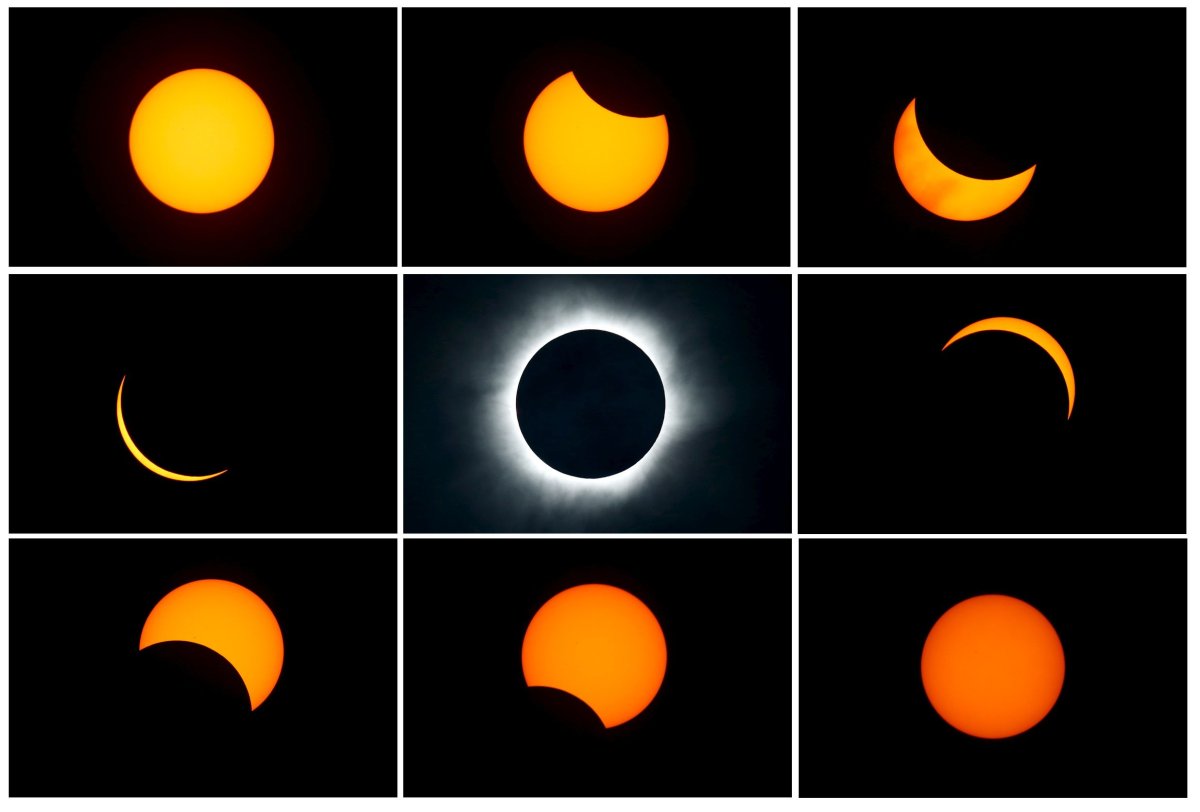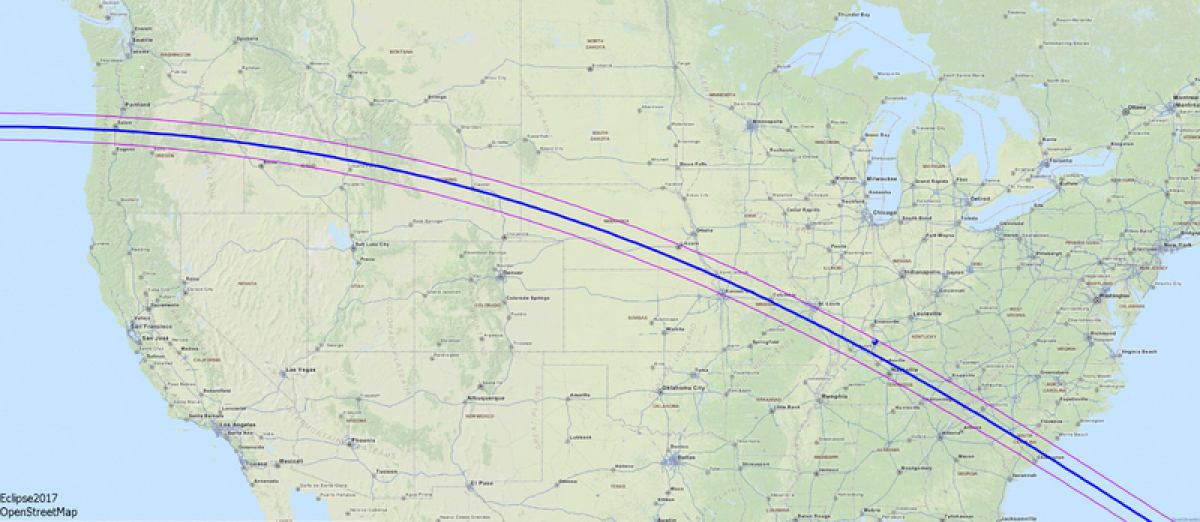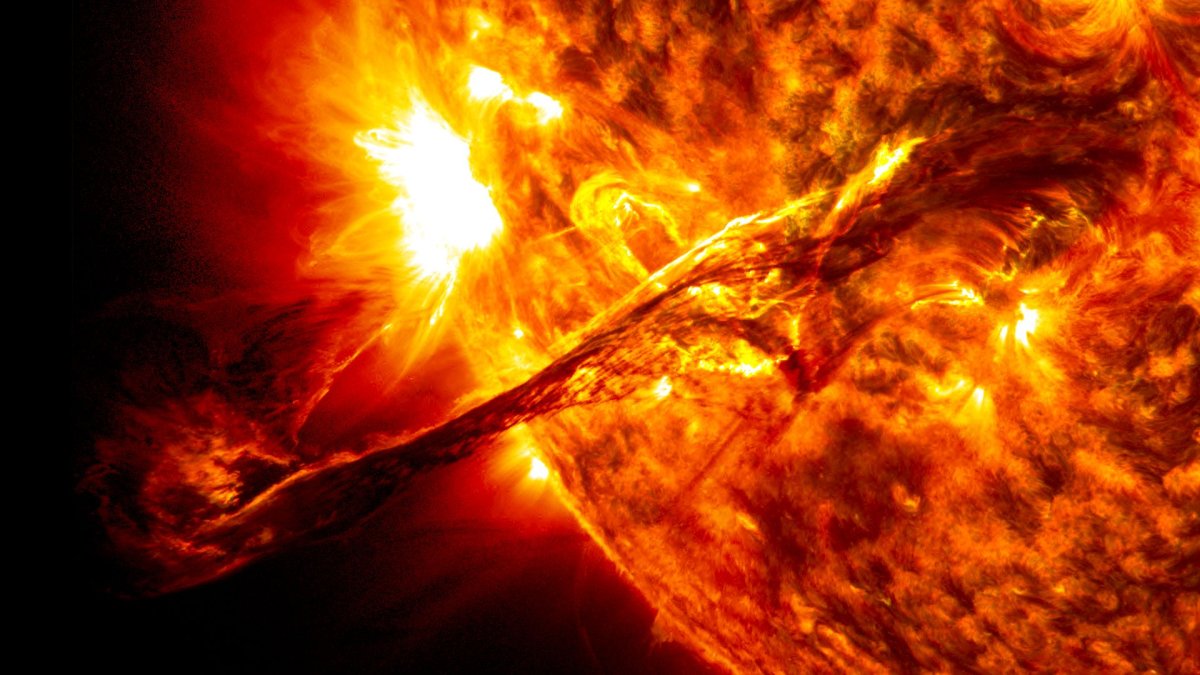
The first total solar eclipse to pass from the West Coast to the East Coast in almost a century will see parts of the U.S. plunged into darkness over the course of the day on August 21. With only a month to go, Newsweek spoke to Jay Pasachoff, Field Memorial Professor of Astronomy at Williams College, about what the eclipse is, what happens on the day—and what we can learn from the cross-coastal event.
What is a total solar eclipse?
For an astronomer, it is a fantastic chance to get data about the Sun that is not available in any other way. For the general public, it is a fantastic and awe-filled experience, when it gets abruptly dark by a thousand times within seconds in the middle of the day. Many people call it the most beautiful experience they have ever had, even "life-changing."
Why do they happen?

During a total eclipse, when the Moon blocks the solar photosphere (the everyday sun, the sphere from which Greek 'photos' meaning, light, comes), the blue sky vanishes and we can see the faint outer part of the Sun that is normally too faint to see.
Are they rare events?
Total eclipses are visible from a narrow path a hundred or so miles wide and thousands of miles long about every 18 months. So they aren't so rare if you are willing to travel. But if you wait at one spot after you see a total eclipse, on the average, you have to wait about 350 years for a second total eclipse to come to you.
Why is the August 21 solar eclipse special?
It is the first total solar eclipse in 99 years whose path of totality crosses the continental United States from west coast to east coast. It is the first total solar eclipse ever that goes over only U.S. land and no other country.
What will happen on the day?

If you are in the band of totality, you will see (if you look through special 'solar filters' that darken the Sun by a factor of about 100,000) the Moon gradually covering the sun for about 75 min, then the beautiful totality, and then the uncovering for another 75 min.
What will people in the path of the eclipse see?
At the onset of totality, the remaining crescent of the uncovered part of the sun will wane, and bright spots ('Baily's beads') will gleam through valleys on the edge of the Moon. The last bead is so bright with respect to everything else in the sky that it is called the 'diamond-ring effect,' with the inner solar corona as the band of the ring. Totality will be beautiful for up to two minutes, 40 seconds, depending on where in the path of totality you are; the corona will be visible and the sky will be dark around the sun, with a reddish horizon all around. Then the diamond ring and Baily's beads appear in reverse.
What about those not directly in its path?
They will see merely a partial eclipse—and they will wonder why other people think an eclipse is fabulous. It is only totality that is fabulous. For a partial eclipse, it isn't uninteresting to look up (through a special 'solar' filter all the time) and see the Moon gradually cover and then uncover the Sun, but nothing dramatic occurs.
When will the next total solar eclipse happen over the U.S.?
There will be a total eclipse whose path of totality sweeps up from Texas through Cleveland and over Canada to northern New England on April 8, 2024. But if all you see are partial phases, you'll have the same effect for annular eclipses (the Moon is a bit farther away from us than average so it doesn't completely cover the Sun leaving an annulus—a ring—of everyday sunlight, so the sky remains blue and the Baily's-beads/diamond-ring/corona don't appear). Partial phases will be visible in part of the eastern U.S. on 10 June , 2021; and throughout the US to the sides of the path of the annular eclipse of 14 October, 2023, whose annularity will sweep up the western U.S. from Oregon to Texas.
What can total solar eclipses tell us about the Sun?

Aha, here's the important science: observing from Earth's surface during totality gives us the only full view of a major portion of the solar corona, the part that extends from its base at the edge of the everyday sun up for at least 3/4 of a solar radius, that is, hundreds of thousands of miles of the solar atmosphere.
The spacecraft that have 'coronagraphs' that make a sort of artificial eclipse hide that much of the lower and middle corona, since it is so bright it would scatter around in the optics and mess up their views of the outer corona.
A few 'coronagraphs' on high mountains on Earth can barely detect the corona, and not with the depth and detail that we can see at solar eclipses. So at a total solar eclipse, scientists collect important and unique information about how this major layer of the solar atmosphere functions, and how it changes over the 11-year solar cycle.
Other scientists—atmospheric scientists instead of astronomers—find out how Earth's atmosphere reacts to the shock of having sunlight turned off abruptly and then turned on abruptly, improving their understanding of Earth's atmosphere.
Uncommon Knowledge
Newsweek is committed to challenging conventional wisdom and finding connections in the search for common ground.
Newsweek is committed to challenging conventional wisdom and finding connections in the search for common ground.
About the writer
Hannah Osborne is Nesweek's Science Editor, based in London, UK. Hannah joined Newsweek in 2017 from IBTimes UK. She is ... Read more
To read how Newsweek uses AI as a newsroom tool, Click here.








